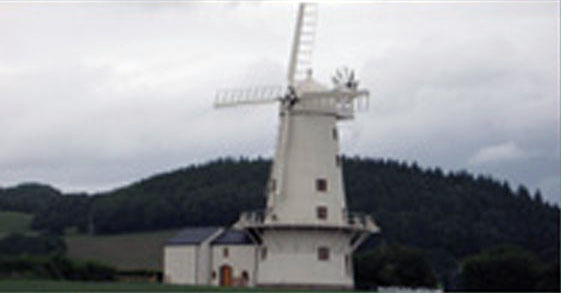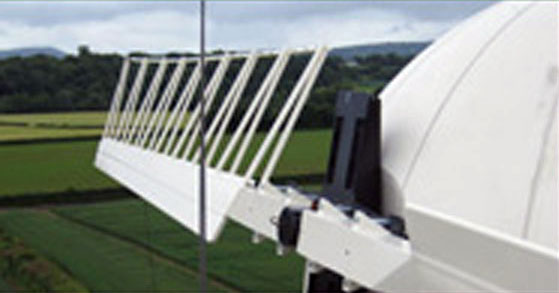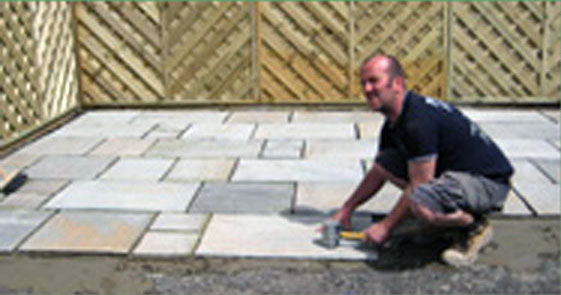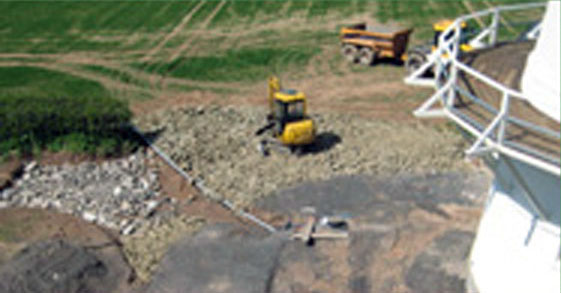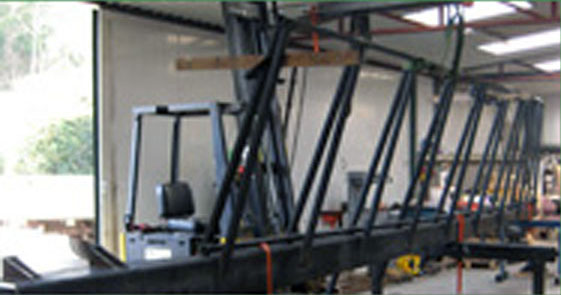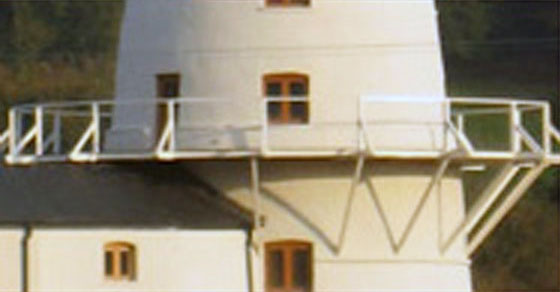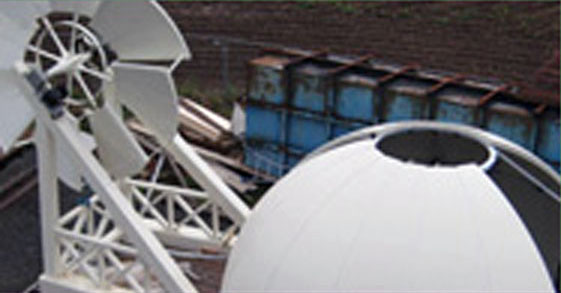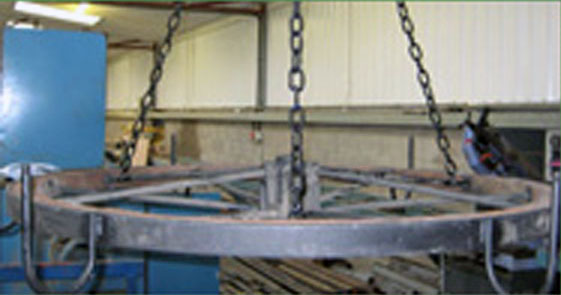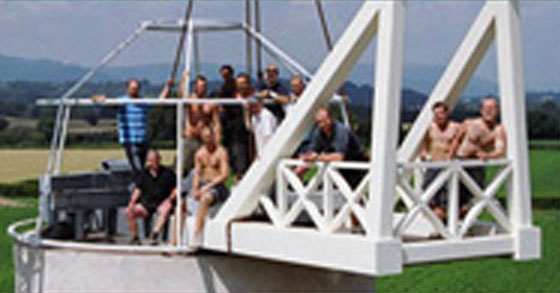Dave has been busy planting shrubs around the outside of the mill, however he did have to draft in help from Jon & Rob Morgan to help him with the grass.
With the sails finally straightened it’s time for fitting. The first was hung vertically below the shaft, with the second being secured opposite, those were then rotated 90 deg and the third and fourth sails were fitted in precisely the same way as the first pair.
We had a few problems with the sails at first, as we had not made the faceplate. I didn’t think that they would spin without the shutters, but they did, and we had to stop them from spinning by hanging an anvil on the front.
Once the faceplate was fitted and the anvil removed there was no wind so it was over a week before they started to spin. The following week they spun extremely well, infact the fasted we recorded was 18 revs per minute! We have now anchored them off with the brake, until we sort out a generator.
